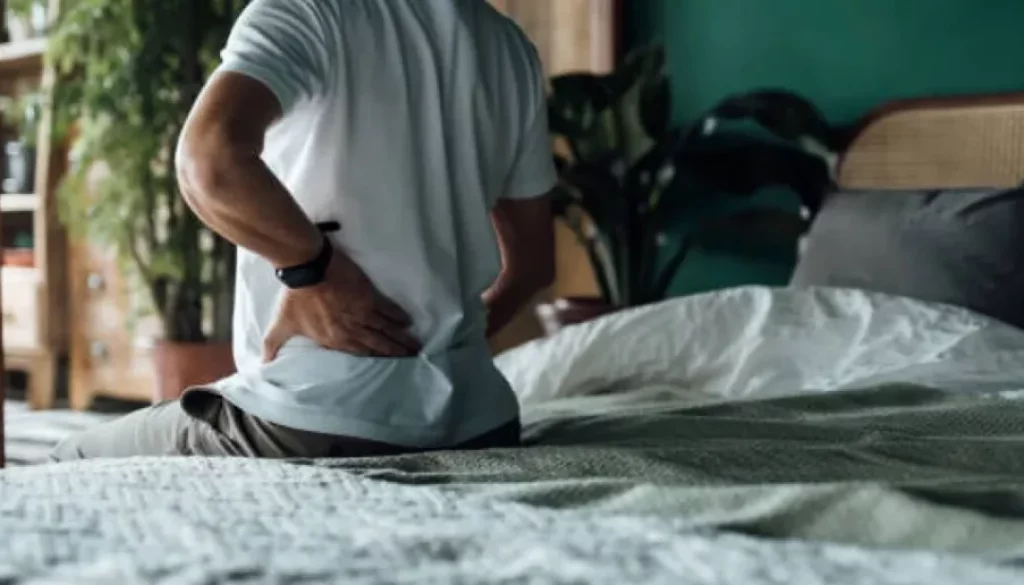Back pain when i get out of bed what is spinal stability?
“Once I get moving it seems to be okay, but when I first go to get up the pain is awful.” This is an immediate flag for me when investigating the cause of a patient’s low back pain. You don’t feel great when standing or sitting, but its much easier to maneuver around compared to shifting in bed or rising in the morning.
When I continue to examine these types of cases, what else do we find? Nearly full range of motion, pulling sensation through the central low back when bending forward, very few or no tender to touch spots through the muscles over the painful area.
There is variability, but they all have one thing in common: lack of effect from hands-on therapy. Active Release Technique already gives Cross-Up a massive advantage in treating patients, and quite frankly, it’s applicable for the majority of cases where the issue is caused by excessive tightness or muscle spasm. When I perform just a few protocols of active release on a patient with the titles complaint, though, it does absolutely nothing. Why? Because your condition is not one of tension, but rather one of excessive motion and shearing of the spine; aka Spinal Instability.
What is spinal instability?
Spinal instability results from cumulative trauma – so it’s not usually a single event that instigates your pain. I frequently see this in golfers, but it also occurs in other athletes or professions that require frequent rotation (ie. tennis, baseball, yoga fanatics). As hinted at before, an unstable spine is often intolerant to flexion; therefore, bending forward or any compressive activity (sitting or overhead weights) can slow recovery.
Let’s take this a step further..
True spinal stability, as described by Dr. Stuart McGill, is achieved through a balanced stiffening from the entire core musculature. Prior to movement, the core muscles need to work in unison to control spinal movement in each of the 3 planes of motion: flexion-extension, rotation, & side bending. During these activities, all of the segments of the spine must move together to disperse the load. Well, when core activity is absent, the spinal vertebra begin to slide in ever so slight but abnormal ways. With repetition, and at a certain threshold, this leads to disruption of disc fibers and a pain response to notify you of the damage.

So you just need to get stronger, right? Not so fast.
Movement requires strength, but it must be linked with control and endurance to ensure efficiency. In cases involving the low back, when upper and low body movements are not accompanied by a core control and endurance, the spine is the only area left to absorb the load. The core muscles act a brace around the spine to transmit forces between the upper and lower half and reduce any compressive stresses placed on the spine. You can imagine that with a swing or throw, you must generate power from the legs and channel that through the core and up to the arms; otherwise, the spine, hip, or shoulder take on a lot more torque than necessary.
How Do We Treat Spinal Instability?
First off, we need to find out which movements you can tolerate. On that first day of rehab, I like to move along a progression. Begin on the feet, then to the knees, and finally lying down. I usually perform 2 exercises to fatigue at each position, and every single person (to their surprise) can get off the floor at the end with significantly less pain and struggle than anticipated.
Best Exercises for Lower Back Pain:
With the exercises, we are activating each of the 3 different planes of motion that the core muscles work to support. At the beginning, it’s especially beneficial to address the gluteal muscles as well. By re-integrating the glutes, we can unload the back by calming activity of the hamstrings and spine extension muscles that often compensate for limited core functioning.
At Cross-Up Chiropractic clinic, we believe in giving you the tools to succeed at home; therefore, we recommend a few sessions to track your progress and build upon the exercise regimen. This ensures that you are performing the program safely and comfortably, then it’s up to you to keep it going at home. After a couple weeks of performing them on your own, and once you have at least a week to two without any discomfort, then you will be ready to go back to task specific exercise or lifting programs. The beauty of it all is that you can apply all the new principles of core integration to any other activity, job, or sport.
If this sounds like you, and you would like to set up an appointment, click below or call us at 847-984-2702.
Take Care,
Dr. Jack P Rieke, DC, ART





